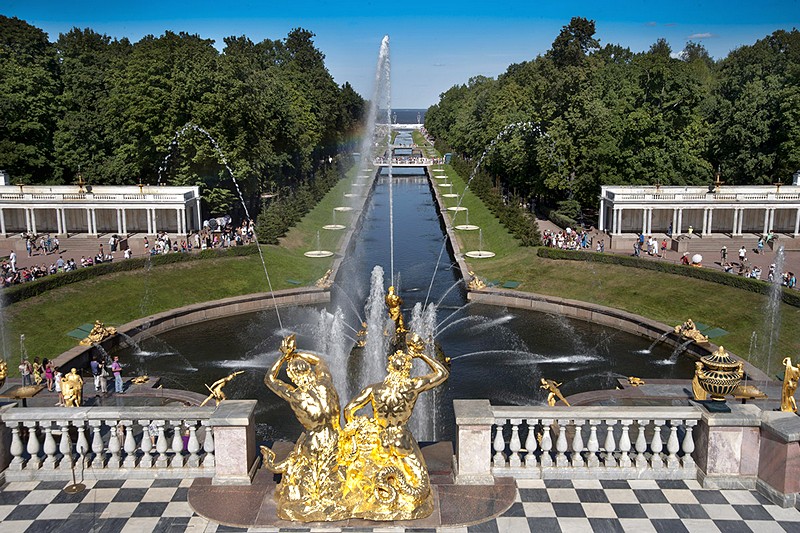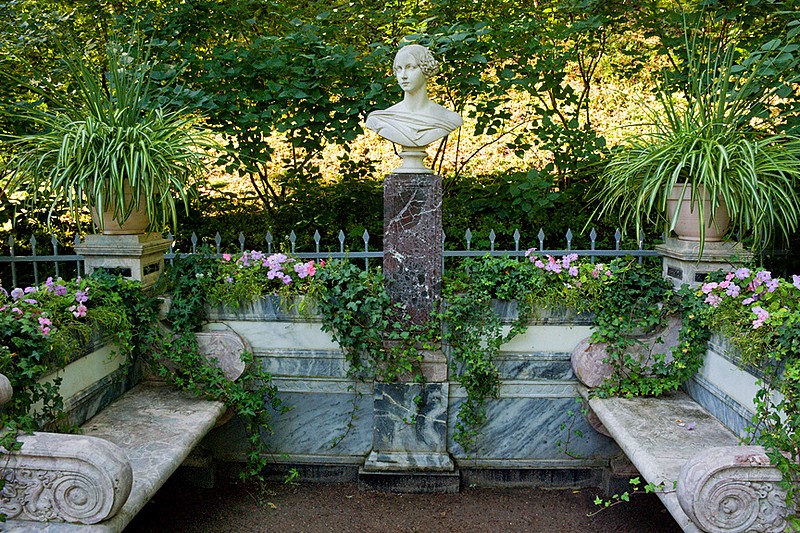Peterhof Park and Gardens
The spectacular parkland at Peterhof is remarkable for the sheer variety of styles encompassed in its layout and features. Representing nearly two centuries of European aristocratic fashion executed to the highest standards, Peterhof is like an encyclopedia of park design through the age of empire. Particularly impressive is the fact that the master landscapers and garden designers who worked on the estate at Peterhof managed to overcome the extremely inclement conditions of the northern climate to create a wonderland of greenery and flowers, sweeping vistas and ornate architectural decorations.
The first areas of land to be developed at Peterhof were the formal gardens around Monplaisir and Marly, part of the Lower Park. The earth excavated to create the Marly Ponds was used to build a rampart against the sea winds that, along with a 3-meter-high stone wall, surrounds the Garden of Venus, Peter's orchard, with cherry and apple trees, and several charming statues. The garden was created simultaneously with Marly, and completed in 1724. Adjoining the Garden of Venus, the Garden of Bacchus was also begun during Peter's reign, although additions were made to its statuary and fountains throughout the 18th century. The same is true of the gardens around Monplaisir.
Also during Peter's reign, and then under Empress Elizabeth, who continued her father's work at Peterhof after over a decade of neglect, the Upper Gardens south of the Grand Palace, which great most visitors to Peterhof beyond the entrance to the park, were laid out, mostly by Jean Leblond and Nicola Michetti. Here, three alleys lead to the Palace, surrounded by formal flowerbeds and low, clipped hedges.
Catherine the Great oversaw the creation of the first landscape garden at Peterhof, the English Park, which was designed jointly by English landscaper James Meders and the great Italian architect Giacomo Quarenghi. The park was once the setting for Quarenghi's English Palace, considered one of the finest works of Russian classicism, which was later used as a guesthouse for foreign visitors, and then destroyed by artillery fire in the Second World War.
The grounds were again extended considerably during the reign of Nicholas I, who not only commissioned the Alexandria Park, but also added large sections of landscaped gardens around the original Lower Park.
Upper Garden:
| Open: | Daily 9 am to 8 pm |
|---|---|
| Admission: | Free |
| Photo and video: | Free |
| Accessibility note: | The garden is wheelchair accessible. |
Lower Park with Fountains:
| Open: | Daily, 9 am to 8 pm. Last admission at 7:30 pm. Fountains operate from 10 am to 6 pm (Saturday and Sunday till 7 pm). |
|---|---|
| Admission: | RUB 500.00. Students and children: RUB 250.00 |
| Photo and video: | Photo (without tripod) is allowed |
| Accessibility note: | The garden is wheelchair accessible. |










